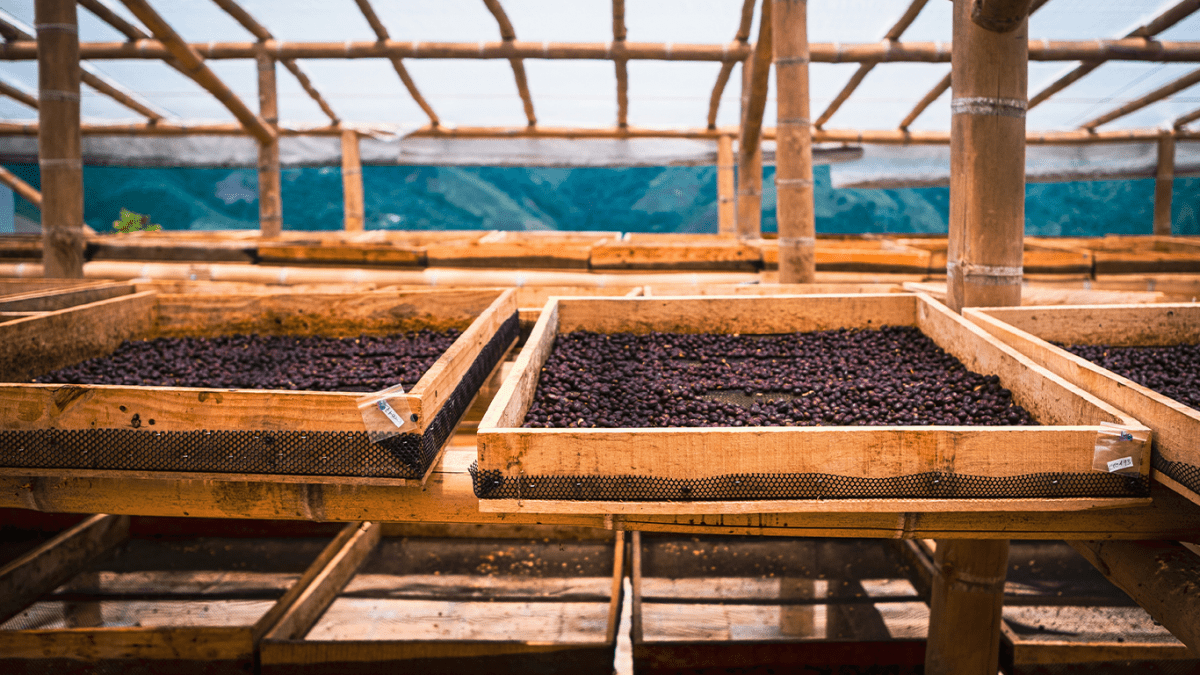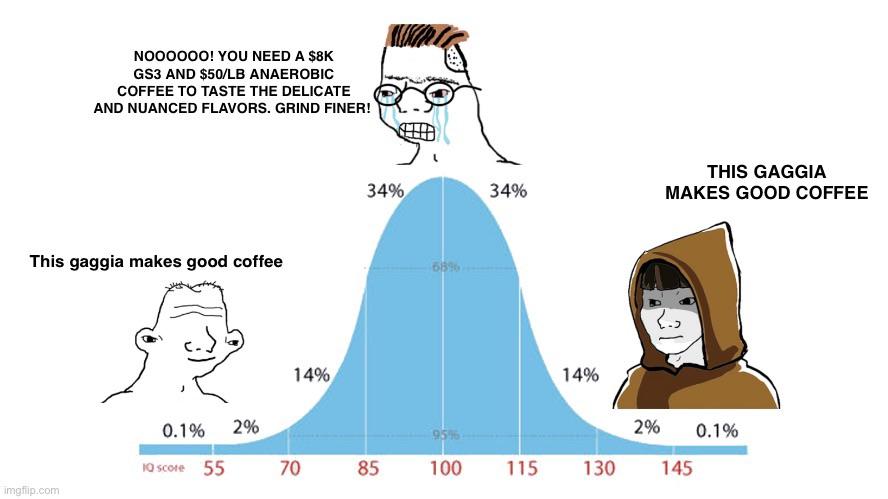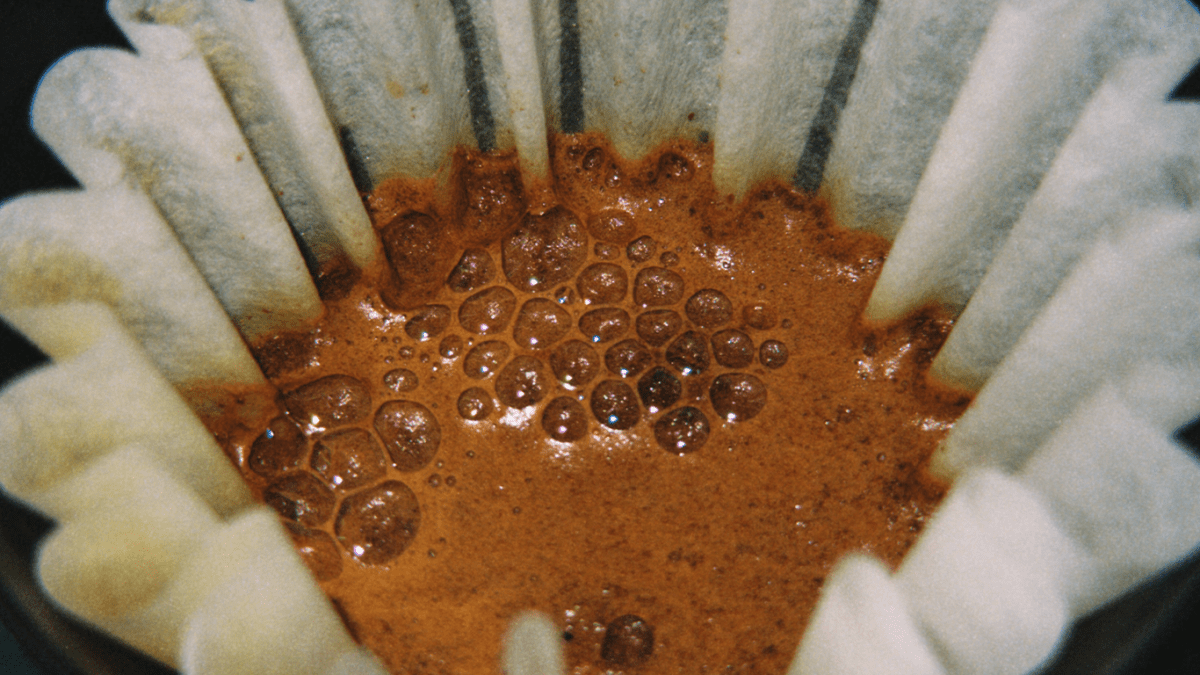DROP #4 SEPTEMBER 5, 2025 @ 12:00 PM EST
Fresh Coffee Does Not Mean Better Coffee: Why Degassing Matters

In the specialty coffee world, “fresh” is often treated as the gold standard. I'm here to tell you that thinking is wrong. Yup.
Sorry dawg.
Coffee geeks rush to get beans that were roasted just yesterday, thinking they’ll taste the best while they’re fresh out of the roaster. But here’s the truth—too fresh isn’t always a good thing.
Often times, you're literally just tasting the roast and not the coffee itself.
When coffee is roasted, it traps a lot of carbon dioxide inside the bean. Right after roasting, the beans start to release that gas through a process called degassing.
If you brew coffee too soon, all that built-up gas will disrupt extraction, hiding the coffee’s true flavors. The result? A sour, underdeveloped cup that doesn’t do the coffee justice.
In this article, we’ll explore why degassing is crucial for flavor, how long you should wait before brewing, and how you can identify when your coffee is at its peak.
Table of content
What is Degassing in Coffee?
Degassing is the process of releasing CO₂ from freshly roasted coffee beans. During roasting, chemical reactions inside the beans generate gas, which gets trapped in the bean’s porous structure. Once the beans cool, the gas begins to escape—a process that can take several days or even weeks, depending on the roast level and processing method.
Why Does Degassing Matter?
If you brew coffee without allowing enough time for degassing, the trapped CO₂ interferes with the brewing process:
- Disrupted Extraction: Excess gas forms bubbles during brewing, preventing water from fully penetrating the coffee grounds. This leads to uneven extraction and a sour, underdeveloped flavor.
- Unstable Crema in Espresso: Fresh beans can produce excessive crema that quickly dissipates, leaving you with an unbalanced shot.
Learn more about degassing here
How Long Should Coffee Rest?
There’s no universal answer to how long coffee should rest. The ideal degassing period depends on roast level, processing method, and your brewing style. Here’s a general breakdown:
Light Roasts
These beans are dense and retain more gas, so they require a longer resting period. Many light roasts taste best after resting for 7 to 14 days.
Dark Roasts
Dark roasts degas much faster because they’re more porous. They may be ready to brew after just 2 to 5 days. However, waiting too long with dark roasts can cause them to lose their freshness.
Pay Attention To Processing!
- Washed Process: Washed coffees degas faster due to the removal of mucilage during processing. These beans typically hit their peak flavor after 5 to 8 days.
- Natural Process: Natural coffees retain more CO₂ and require a longer degassing period, around 10 to 14 days.
- Honey Process: These fall somewhere between washed and natural, usually needing 7 to 10 days to fully develop.
Learn more from MTPak here
Tips for Home Brewers
To get the best out of your beans, follow these simple tips:
Check The Damn Roast Date!
Always buy coffee with a visible roast date. This will help you determine the appropriate resting period. If the bag doesn’t show a roast date, that’s a red flag.
Taste at Different Intervals
Start brewing a few days after the roast date and taste your coffee every 2–3 days. This will help you find the window when the flavors hit their peak.
Store Beans Properly
Use an airtight container and store your coffee in a cool, dark place. Proper storage helps maintain freshness during the degassing period without speeding up staling.
Patience Pays Off
Allowing coffee to rest may seem counterintuitive, especially when freshness is emphasized so often. But that extra patience can make a big difference.
Fresh coffee can be...chaotic. Its flavors are muted and underdeveloped because the gas trapped inside prevents proper extraction. When you give it time to rest, the flavors balance out and harmonize.
Suddenly, that flat, grassy coffee transforms into something vibrant and complex.
Roasters recommend resting periods for a reason. A coffee that has been properly rested will taste sweeter, clearer, and more dynamic than one brewed too soon. For example, a natural-processed Ethiopian coffee might reveal juicy berry notes and floral undertones after a week, compared to a muddled flavor if brewed immediately.
Learn more from the king of all things coffee, Scott Rao here
Can I brew coffee immediately after roasting?
You can, but it’s not ideal. Brewing too soon will result in a sour, underdeveloped cup because the beans haven’t had time to degas properly.
How long should I rest coffee for espresso?
For espresso, it’s best to let freshly roasted beans rest for 7–10 days. This allows for more stable crema and balanced extraction.
Does degassing affect caffeine content?
No, degassing does not change the caffeine content. It only affects the release of CO₂ and flavor development.
What happens if I wait too long to brew my coffee?
Over time, coffee can lose complexity and freshness. However, properly stored beans can remain enjoyable for several weeks.
Why does my coffee taste different every day after roasting?
Coffee evolves as it degasses and rests. This is normal and part of what makes specialty coffee so dynamic.
Sorry. Fresh Coffee Is Not Better Coffee.
Fresh coffee isn’t always better. Letting your beans rest and degas after roasting is one of the simplest ways to improve your brewing experience. It takes a little patience, but the payoff is worth it. Balanced, flavorful coffee beats sour, gassy coffee every time.
Check the roast date, give your beans time to rest, and trust the process. Your coffee will thank you.
Want to Taste Coffee at Its Peak?
At Dös Coffee Club, we source unique coffees that are always rested and ready for brewing. We’re all about finding coffees with exceptional flavor that truly shine when given the time they need to develop. Sign up for Dös Coffee Club and discover your next favorite coffee.






